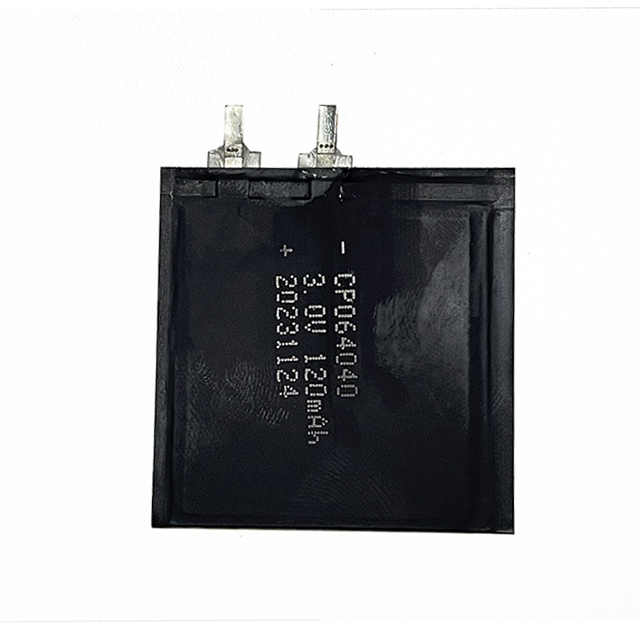Thin-Film Batteries: Powering the Future of Flat Electronics and Wearable Technologies
The Rising Star of Thin-Film Batteries: Powering the Future of Flat Electronics and Wearable Technologies

In the ever-evolving world of electronics, batteries play a pivotal role in powering devices that have become increasingly smaller, lighter, and more versatile. Amidst this technological revolution, thin-film batteries, or ultra-thin batteries, have emerged as a game-changer, offering unparalleled flexibility, reliability, and energy density. This article delves into the intricacies of thin-film batteries, their applications, and the role they play in propelling the wearable technology market forward.
Introduction to Thin-Film Batteries
Thin-film batteries are a revolutionary type of energy storage device that combines ultra-thin design with flexibility and high energy density. Unlike traditional lithium-ion batteries, which are bulky and rigid, thin-film batteries are made of layered materials deposited on a flexible substrate. This allows them to conform to curved surfaces and be integrated into a wide range of devices, from smartwatches and health monitoring patches to implantable medical devices and smart cards.
The key components of a thin-film battery are the anode, cathode, electrolyte, and current collectors. The anode and cathode are the electrodes where the chemical reaction occurs, releasing electrons that create an electric current. The electrolyte facilitates the movement of ions between the electrodes, while the current collectors gather and distribute the electrons.
Advantages of Thin-Film Batteries
The most striking advantage of thin-film batteries is their ultra-thin profile. With a thickness of only 0.4 mm or less, they are significantly thinner than conventional lithium batteries, making them ideal for flat electronic applications. This thinness not only enables their integration into thin devices but also allows for more space for other components, enhancing the overall functionality of the device.
Another significant advantage is their flexibility. Thin-film batteries can be bent and twisted without affecting their performance, making them suitable for wearable devices that need to conform to the user's body. This flexibility also allows for more innovative design options, enabling the creation of curved screens and other non-planar interfaces.
Moreover, thin-film batteries exhibit a low rate of self-discharge. At room temperature, they lose less than 5% of their charge annually, ensuring longer shelf life and reduced waste. This is a significant improvement compared to conventional batteries, which can lose up to 20% or more of their charge over the same period.
Lastly, thin-film batteries offer high energy density. The improved lithium-manganese composition used in these batteries results in an energy density that is twice as great as other comparable products on the market. This means that they can store more energy per unit volume, enabling longer runtimes and more powerful devices.
Applications of Thin-Film Batteries
The unique properties of thin-film batteries make them ideal for a wide range of applications. One of the most promising areas is wearable technology. As the market for smartwatches, fitness trackers, and other wearable devices continues to grow, the demand for reliable and efficient power sources has also increased. Thin-film batteries offer the perfect solution, providing enough energy to power these devices for extended periods while maintaining a comfortable fit and minimal bulk.
Another promising application is in implantable medical devices. Thin-film batteries can be integrated into pacemakers, defibrillators, and other implantable devices, providing a continuous and reliable power source without affecting the patient's comfort or mobility. Their flexibility and low self-discharge rate make them ideal for these applications, ensuring consistent performance over long periods of time.
Smart cards and RFID tags are also potential applications for thin-film batteries. These devices require a small but reliable power source to function properly, and thin-film batteries provide just the right amount of energy while maintaining a thin profile.
Future Prospects and Challenges
The future looks bright for thin-film batteries. As the demand for flat and wearable electronics continues to grow, the need for reliable and efficient power sources will also increase. Thin-film batteries offer the perfect solution, combining ultra-thin design, flexibility, and high energy density in a single package.
However, there are still some challenges that need to be addressed. One of the main challenges is cost. Thin-film batteries are currently more expensive than traditional lithium-ion batteries, due to their complex manufacturing process and specialized materials. However, with further research and development, it is expected that the cost of thin-film batteries will gradually decrease, making them more competitive in the market.
Another challenge is scalability. Currently, thin-film batteries are mainly used in small-scale applications. To meet the demand of larger devices and systems, it is necessary to develop scalable manufacturing processes that can produce larger batteries while maintaining their unique properties.
Lastly, there are also safety concerns that need to be addressed. Although thin-film batteries are generally safe.





